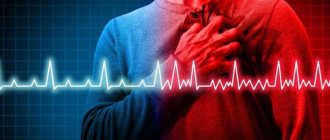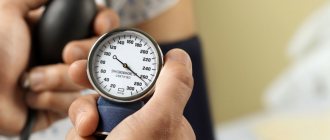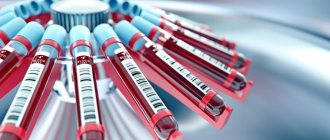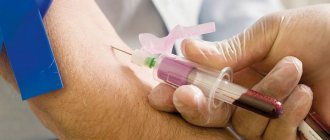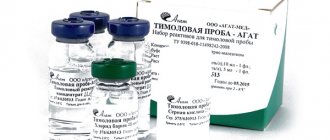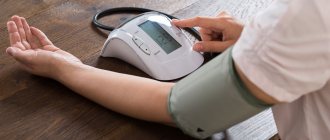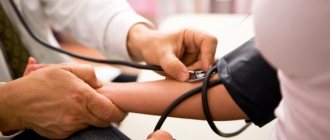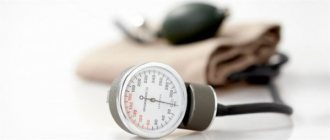For the timely detection of pathologies, medicine uses many diagnostic methods. Along with measuring body temperature or blood pressure, the procedure for determining the degree of oxygen saturation in the blood has become widespread. It facilitates the treatment of people at risk and helps prevent complications. A medical device called a pulse oximeter is used to monitor patients. This is a simple device that can facilitate monitoring of patients and save many lives.
Pulse oximetry: indications, features of preparation and conduct of the study
To determine the degree of oxygen saturation in the blood, a special study is performed - pulse oximetry. The diagnosis is based on the ability of such types of hemoglobin as carboxyhemoglobin and oxyhemoglobin to absorb light rays with different intensities. The degree of absorption is affected by the amount of oxyhemoglobin. The level of absorption is higher when there is a large amount of hemoglobin of the specified type. do pulse oximetry at a clinic in Rostov-on-Don by appointment.
Indications for the study
A hardware method for determining the level of blood oxygen saturation is used to monitor the patient's condition.
It usually shows real-time data. There are models of pulse oximeters that save data and create graphs. In more rare cases, the method in question for determining the level of oxygen in the blood is prescribed as a separate diagnostic method. Pulse oximetry in the sleep medicine department is indicated for patients who suffer from breathing problems during night rest. Breathing disorders at night are observed in the following pathologies:
- hypertension;
- obesity;
- COPD;
- Pickwick's syndrome;
- respiratory failure (from 2nd degree).
Pulse oximetry in the somnology department is needed for people with suspected apnea, in which the following signs are observed:
- holding your breath for a short time during sleep, which occurs periodically;
- sweating at night;
- snore;
- daytime sleepiness + depression;
- Frequent awakenings at night, which reduces sleep efficiency.
Pulse oximetry at the Sleep Medicine Clinic is also performed in the following cases:
- Use of anesthesia. When the patient is under anesthesia, he cannot indicate a deterioration in his condition, so the pulse oximeter will show the necessary data about the condition of the person being operated on.
- Transporting the patient. Due to the portability of the device, it is used to monitor the patient during transportation. This equipment is available on many ambulances, airplanes, and helicopters for medical purposes.
- Operations on the limbs. Such surgical procedures are accompanied by temporary blockage of blood vessels. This is necessary to prevent heavy bleeding. In this case, the device is attached to the finger to control blood circulation. Poor oxygen saturation of tissues is dangerous due to their death.
- Diseases of the lungs, heart. Some pathologies of these organs are accompanied by problems with oxygen saturation in the body. A pulse oximeter helps doctors determine the severity of the disease and select appropriate treatment tactics. Thanks to the procedure, it is possible to quickly identify pathologies that manifest themselves in attacks: apnea, bronchial asthma.
- Resuscitation. In this department, diagnostics are carried out continuously for several days for patients after surgery or for those whose lives are at risk due to a serious illness.
- Training of athletes. The procedure in Rostov is carried out exclusively according to medical advice. indications. Using pulse oximetry, trainers monitor blood oxygen saturation during extreme exercise. At the same time, they make the necessary amendments to training methods.
- Carbon monoxide poisoning, oxygen therapy. In the treatment of some diseases, therapy with a mixture of gases containing a large percentage of oxygen is used. Thanks to the procedure, the effectiveness of the therapy is established.
The essence of pulse oximetry
We need oxygen for metabolism; without it, the body will not be able to synthesize ATP, the main energy substance. When we inhale, air enters the lungs, from where it is transported throughout the body through a network of capillaries.
Content:
- The essence of pulse oximetry
- How does a pulse oximeter work?
- Instructions for use
- Measuring in a dream
- Results: norms and deviations
- Where to buy it
Typically, the surrounding air consists of 78% nitrogen, 21% oxygen and 1% other mixtures. A healthy body can receive sufficient oxygen from such air. But with environmental pollution, in industrial zones and large cities, the composition of the atmosphere does not change for the better, the proportion of carbon dioxide and nitrogen increases. As a result, people develop chronic oxygen starvation, constant fatigue, cardiovascular system defects, drowsiness and lethargy.
Also, the body does not receive the required amount of O2 in case of diseases of the respiratory system, blood vessels and heart. The causes of these diseases can be poor diet, snoring, sedentary lifestyle, and bad habits. If left untreated, chronic lack of oxygen leads to more serious problems, including death. Therefore, a section of pulse oximetry has appeared in medicine, which is devoted to monitoring the saturation of arterial blood with O2. The average percentage of saturation is called the saturation index; normally it is 95-98%. If it decreases to 94%, the patient is prescribed treatment; if the level is below 91%, emergency medical care is required.
Pulse oximetry is needed:
- with oxygen therapy;
- after operations;
- during anesthesia;
- for monitoring in chronic diseases (for the prevention of hypoxia);
- in neonatology for the care of premature newborns;
- in obstetrics and pediatrics.
Thanks to technological advances, patients can now measure their saturation themselves. To do this, you need to buy a portable pulse oximeter and learn how to use it.
What the study shows
Pulse oximetry is performed to determine vital signs:
- Pulse rate. This indicator shows the heart rate, but it does not always coincide 100% with it. Sometimes there are differences between the readings of a pulse oximeter and an electrocardiograph. This feature is explained by partial absorption of pulsation by the walls of blood vessels, different elasticity of blood vessels, and blockage of the lumen.
- Saturation. This term refers to the saturation of blood with oxygen. The indicator under consideration indicates disturbances in cardiac activity and breathing immediately, before the following signs of oxygen deficiency appear: blueness of the skin, mucous membranes, change in heart rhythm.
Results: norms and deviations
The normal oxygen content for a healthy person is considered to be at least 95%; readings above 98% require rechecking. The pulse in adults is considered normal within 60-90 beats per minute. In newborns, this figure reaches 140 beats; with age, the heart rate slows down and in adolescence is compared with an adult. Like any electronic device, a pulse oximeter can make mistakes.
For example, readings less than 90% when feeling normal indicate a malfunction of the device; it is better to check it for charge. Also, data that constantly changes dramatically over large ranges cannot be considered correct. If the monitor shows first 98% and then 91%, the device is faulty.
If the monitor shows 94%, you need to urgently consult a doctor or call an ambulance if a visit to a doctor is not possible. Treatment always involves treating the underlying disease, that is, eliminating the problem that caused the lack of O2 in the body.
To quickly alleviate the condition and save the patient, oxygen therapy is used - a method of treatment with oxygen. Most often, treatment is carried out through a mask or nasal cannula, through which beneficial gas flows.
This therapy can be done in an inpatient or outpatient setting. Hospitals use masks, special cameras and tubes. The same thing can be done at home if you have an oxygen concentrator.
A concentrator is a small device that produces pure O2 molecules from the surrounding air. These molecules are additionally moisturized so as not to dry out the airways. If desired, you can connect it to a mask or cannula; some types of concentrators even make oxygen cocktails. Such portable equipment is recommended for people with chronic diseases, families with pregnant women and small children.
Best materials of the month
- Coronaviruses: SARS-CoV-2 (COVID-19)
- Antibiotics for the prevention and treatment of COVID-19: how effective are they?
- The most common "office" diseases
- Does vodka kill coronavirus?
- How to stay alive on our roads?
Who gives the referral for pulse oximetry?
Diagnostic results are often needed in the field of resuscitation and anesthesiology. Patients in serious conditions are admitted to these departments. Their pathologies are dangerous because they interfere with vital functions. Doctors monitor the level of oxygen in the blood until the patient's condition stabilizes.
Pulse oximetry in the clinic can also be prescribed by specialists in the following profiles:
- therapist;
- resuscitator;
- surgeon;
- phthisiatrician;
- pulmonologist;
- anesthetist.
Features of preparation for research
No specific preparation is required to perform pulse oximetry at the Sleep Medicine Clinic. In any case, the device will show the oxygen saturation of the blood. But to make the data more objective, it is recommended to follow the rules below:
- Do not consume stimulants before the procedure: energy drinks, caffeine, narcotic drugs. The condition of the body changes as the effect of the listed drugs weakens.
- Elimination of alcohol. Alcohol slightly distorts the readings of the device.
- Avoiding smoking. Smoking before pulse oximetry contributes to changes in the depth of inspiration, vascular tone, and heart rate, affecting the accuracy of measuring blood oxygenation. A bad habit leads to a decrease in the level of oxygen in the blood.
- Refusal to use nail polish or hand cream on the day of diagnosis. They create an obstacle to light waves.
- You should eat as usual. It is not advisable to overeat or fast on the day of diagnosis. Otherwise, the measurement results will be distorted.
Instructions for use
The pulse oximeter is easy to use at home; it is a simple and intuitive device. Its main advantage is that to obtain data it is not necessary to take blood from the patient; for example, previously this could only be done in a laboratory setting. Modern measuring instruments do not require invasive interventions, which makes them more accessible. They are disposable or reusable, the latter being especially relevant for those patients undergoing oxygen therapy. So, a person independently monitors O2 levels, and in case of poor results can consult a doctor.
Portable devices run on a pair of AA batteries, some are charged from the mains. You can measure the saturation index and heart rate with the help of loved ones or on your own; the device is also used for people in a serious and unconscious state. Important rules of use:
- Before use, you need to look at the charge level, which is reflected on the monitor. If the charge is too low, the data may be corrupted. It is also better to wipe the sensor from dust with a dry cloth.
- Once the device is turned on, it will boot. You can put on the sensor after 1-2 minutes. Avoid sources of bright light and electromagnetic radiation as this will affect the results.
- An important condition for correct data is immobility during the process. This does not apply to neonatal sensors. The pulse oximeter is attached to the ear (a clothespin-shaped sensor), nose or finger. For finger nails, it is imperative that the nail and finger are clean, without varnish, as this affects the result.
- After connecting the device, you need to wait up to 25 seconds; during this time it is better not to move.
- The monitor displays heartbeat and blood O2 levels.
After this, you should not leave the device turned on, you need to turn it off, fold it and put it away from direct sunlight and moisture. We looked at a classic example of using the device; in addition, there is technology for measuring saturation in sleep.
Types of sensors
Specialists can carry out the procedure using various sensors. Their choice depends on the purpose and features of use. Any sensor is connected via a flexible wire to the device. To carry out diagnostics in practice, the following types of sensors are used:
- Clips. Similar to the shape of a clothespin. Attaches to the index finger and earlobe. Used in the diagnosis of adults and adolescents for their observation over a short period.
- Silicone for adults. They are suitable for monitoring blood oxygen saturation over a long period (3 - 4 hours).
- Flexible silicone. Typically used in newborn studies. Attach to the side of the leg.
- Ear clips. They are distinguished by the presence of convenient clamps, with the help of which they are attached to the auricle.
Clinical examples of monitoring pulse oximetry
Below are the results of monitoring pulse oximetry during sleep in patients of the Barvikha Clinical Sanatorium.
Norm
Rice. 2. Healthy volunteer S., 28 years old. At the top of the figure: statistical data for the study. In the middle: 8-hour scan of saturation and pulse curves. At the bottom: 5-minute scan of saturation and pulse curves.
Blood oxygen saturation levels are normal. Average SPO2 saturation = 98%. Minimum saturation – 90%. The saturation curve is almost a straight line.
Obstructive sleep apnea syndrome, severe form
Rice. 3. Patient Z., 49 years old. Severe form of obstructive sleep apnea syndrome, stage 3 obesity. At the top of the figure: statistical data for the study. In the middle: 8-hour scan of saturation and pulse curves. At the bottom: 15-minute scan of saturation and pulse curves.
Average saturation is reduced (87%) due to the high frequency of severe cyclic desaturations (minimum saturation 52%). Desaturation index – 46 per hour. Outside of periods of desaturation, blood oxygen saturation is within normal limits. The absence of constant chronic hypoxemia is also indicated by such an indicator as “The maximum constant period of decrease in SpO2 below 89%.” It is only 1 minute. Those. even with sharp drops in saturation, after a maximum of a minute, blood oxygen saturation returns to a level above 89%. There are pronounced pulse fluctuations (from 53 to 70 per minute) associated with periods of desaturation.
Rice. 4. The same patient as in Fig. 3.
The figure shows an episode of a drop in saturation lasting 75 seconds from 86% to 53%. It should be noted that when saturation is below 70%, a person begins to turn blue. Such catastrophic problems with saturation are caused by acute asphyxia due to the collapse of the airways at the level of the pharynx during sleep and the development of an episode of obstructive apnea. As a result, the body develops a stress response with activation of the sympathetic nervous system and the release of catecholamines. Blood pressure and pulse rise sharply (in the figure from 55 to 75 in 20 seconds). The brain partially awakens and gives the command to open the airways. But after breathing is restored and the blood is saturated with oxygen, the brain falls asleep, the airways collapse again and the apnea cycle repeats.
This picture is highly specific for obstructive sleep apnea syndrome and reflects a drop in blood oxygen saturation against the background of cyclic apneas and hypopneas. Cyclic desaturations can also be observed with central sleep apnea syndrome (Cheyne-Stokes breathing), but their form is somewhat different from desaturations with obstructive apneas. With obstructive apnea, there is a gentle decline and a rapid rise in saturation during the ventilation phase, as breathing abruptly resumes when the airways open. With central apnea, the descending and ascending limbs of the desaturation episode are almost equal in duration, since the development of apnea is caused by disruption of the respiratory center, which is quite smoothly inhibited and also smoothly restores its activity. Thus, ventilation is resumed gradually, and accordingly, the restoration of saturation also occurs quite smoothly.
It has now been proven that obstructive sleep apnea syndrome is one of the main causes of secondary arterial hypertension [12]. In patients with treatment-resistant hypertension, the incidence of OSA exceeds 80% [6]. During a 12-year follow-up of untreated patients with severe OSA, the risk of developing non-fatal cardiovascular complications was 35%, fatal 15%, which is 5 and 3 times higher, respectively, than in a comparable group of patients without OSA [13].
In patients with moderate to severe forms of OSA, noninvasive ventilation with continuous positive pressure during night sleep (CPAP therapy) is indicated. Giving oxygen during sleep does not provide the desired therapeutic effect due to the persistence of frequent periods of obstructive apnea. Moreover, periods of apnea can be significantly prolonged. This is due to the fact that, against the background of oxygen supply, the critical drop in saturation that awakens the brain occurs much later.
Severe nocturnal hypoxemia secondary to hypoventilation
Fig.5. Patient F., 67 years old. Severe form of COPD (emphysematous type - “pink puffer”), chronic cor pulmonale, pulmonary hypertension, respiratory failure stage 2, heart failure stage 1. Severe chronic nocturnal hypoxemia.
Average saturation during night sleep is 82%. Minimum saturation – 66%. There were 65 significant episodes of desaturation recorded (6.6 episodes per hour). The maximum continuous period of SpO2 reduction below 89% is 66 minutes.
The patient has severe nocturnal hypoxemia due to the underlying disease. At the same time, only a small number of desaturations characteristic of periods of apnea/hypopnea were identified. Thus, the patient did not have clinically significant sleep apnea syndrome.
This patient has absolute indications for long-term oxygen therapy during sleep [3, 6, 8]. The patient's blood gas composition and daytime saturation must be additionally examined. If hypoxemia occurs during the daytime, then continuous oxygen therapy will be required for at least 15 hours a day.
The selection of an effective oxygen dosage during the day can be carried out under the control of blood gases and one-time saturation measurements. At night, the dosage is usually empirically increased by 1 liter. However, to accurately assess the effectiveness of treatment at night, control computer pulse oximetry during sleep is required. In the future, it is necessary to perform pulse oximetry during sleep once every 6 months or in case of a significant change in the patient’s clinical condition. Dynamic monitoring of the effectiveness of treatment during the day can be carried out by the patient himself if he has a pulse oximeter for one-time measurements.
Using the example of this patient’s medical history, I would like to make a number of generalizations regarding the tactics of diagnosis and treatment of patients with chronic respiratory failure and hypoxemia in domestic healthcare. What objective criteria are currently used by pulmonologists and cardiologists to diagnose chronic respiratory failure? Of course, the gold standard is blood gas testing. There are clear international and domestic recommendations on this matter. But how often are these tests performed on patients outside the intensive care unit? Which practitioner prescribes this study in outpatient settings for stable, albeit severe, patients with respiratory failure? But it is precisely in patients in a stable condition that it is necessary to evaluate blood oxygen saturation indicators in order to decide on the issue of long-term oxygen therapy. If the doctor does not have objective criteria for hypoxemia, then he does not prescribe long-term oxygen therapy, although this is one of the few opportunities to prolong the life of patients with chronic respiratory failure. A comparison with a conventional tonometer is appropriate here. If the doctor did not measure blood pressure, then the diagnosis of hypertension would be made much less often, since the clinical symptoms of increased blood pressure are very nonspecific.
In this situation, the use of a simple non-invasive pulse oximetry technique makes it possible to objectively assess saturation parameters and make the right clinical decision. The widespread use of conventional and computerized pulse oximeters will significantly improve the detection of patients with chronic hypoxemia and improve the prognosis of their lives by promptly applying long-term oxygen therapy.
Types of pulse oximetry
There are now many models of pulse oximeters, so doctors use different research techniques:
- Computer. The research results are processed by a microprocessor built into the device. The advantages of computer diagnostics are: elimination of distortions (artifacts), data storage, compatibility with other devices, alarm.
- Transmission. This technique is considered the most common due to the low cost of the device and ease of diagnosis. All models can be used at home.
- Reflected. This type of diagnosis is new. The main difference is in the design of the sensor, where the detector and light source are located on the same side. The sensor has a flat shape. This sensor can be attached to any part of the body.
- Night. Used to study apnea. The sensors are attached during sleep. The procedure is performed by somnologists at the South Clinic.
- Daily allowance. The study is carried out using a portable device capable of reading data throughout the day.
- Non-invasive. The level of blood oxygenation is determined without direct contact of the device’s sensor with the blood.
- Invasive. The method is quite complicated. It is used in specialized departments of clinics. The sensor is inserted into a previously dissected blood vessel.
Types of pulse oximeters
Depending on the design features, pulse oximeters can be stationary or portable. Stationary medical devices are quite large equipment that is installed in intensive care units, operating rooms and other departments of medical institutions. Portable devices are lightweight mobile devices that can be belt, wrist, finger, etc. They are used not only in medicine, but also at home, for example, to monitor the condition of a sick person. And there are versions of finger-worn pulse oximeters with an original design for children, for example, the Topmed FP-10 pulse oximeter.
Some models have built-in memory, which allows you to transfer the received data to a computer and to the archive. This is convenient if you use a pulse oximeter at home and then provide the results to your doctor.
Research algorithm
Pulse oximetry at the South Clinic is considered an absolutely painless research method. The patient lies down on a sofa or couch. A sensor from the device is attached to his finger or wrist. There is no injury to the skin when putting on or removing the sensor. Doctors do not tighten clothespins or bracelets too much, so as not to impede blood circulation in the examination area.
In practice, it is customary to use research over a long period of time (several hours, days, night, day).
The procedure goes like this:
- Preparing for the study.
- Attach the sensor to your finger or earlobe.
- Turning on the device.
- Displaying data on the monitor.
How does a pulse oximeter work?
There are several types of pulse oximeters:
- stationary - large equipment that is used in operating rooms and in the intensive care unit;
- belt - portable devices;
- wrist – used by athletes (heart rate monitor);
- finger - can be used on an outpatient basis, like belt ones;
- sleep monitors – used for respiratory problems during sleep.
A pulse oximeter is a portable or stationary device for measuring the saturation index. It consists of a sensor and a monitor. The sensor is attached to the earlobe, finger or side of the nose. The sensor has an infrared and a red light source, these sources produce two beams that pass through the fabric. Depending on how well hemoglobin is saturated with O2, the length of the light beam it absorbs changes. The detector records the light that remains unabsorbed.
The data is quickly processed and displayed on the pulse oximeter monitor. In addition to the saturation level, the device shows the pulse. Some models record heart rate data in the form of a graph and give an alarm when hypoxia occurs.
The most popular are portable devices that patients can use at home, because they are small in size and provide accurate data on blood oxygen saturation.
All pulse oximeters have memory; the results can be transferred to a computer. This is especially convenient for those who carry out measurement procedures at home; the data obtained can be brought to the doctor for control.
A neonatal pulse oximeter is used for newborns. This is the same device as for adults, but with a cuff sensor, which is made of soft material, is attached to the foot and does not interfere with the child. For older children, the same sensors are used as for adults, but smaller in size. There are also portable versions for children and adults, in which the sensor is built into the monitor; to obtain data, you just need to place your finger in the connector and wait for the result.
When choosing your own pulse oximeter, you should definitely consult a doctor (general practitioner, cardiologist). The doctor will tell you which type of device is suitable (disposable or reusable), what pulse data can be considered normal, and in which case you need to consult a doctor. After purchasing, you need to read the instructions.

